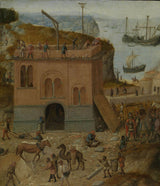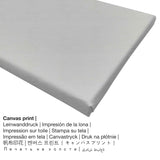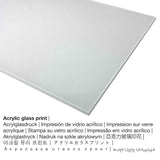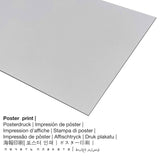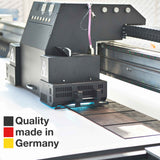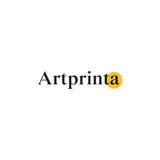The 15th narị afọ onye na-ese ihe sere ọrụ nka Unknown na 1490. Moveover, artpiece a bụ nke Rijksmuseum's nchịkọta nka dijitalụ. Site n'ikike nke - Rijksmuseum (nwere ikike - ngalaba ọha).Akụkọ nke ọrụ nka bụ ihe ndị a: . Ọzọkwa, nhazi ahụ bụ Eserese na a akụkụ ruru nke 1: 1.2, nke pụtara na ogologo 20% dị mkpụmkpụ karịa obosara.
Ihe ndị ahịa anyị nwere ike isi na ya nweta
In the product dropdown selection you can choose your favorite size and material. We allow you to pick your favorite size and material among the following product individualization options:
- Akwụkwọ mmado ebipụtara (akwa akwa akwa): A poster is a printed sheet of canvas paper with a slight surface structure, which reminds the actual masterpiece. Please keep in mind, that depending on the absolute size of the canvas poster print we add a white margin of around 2-6 cm round about the print to facilitate the framing with a custom frame.
- Mbipụta kanvas: The canvas print, not to be confused with a canvas painting, is a digital image printed directly on canvas material. A canvas print of your favorite work of art will allow you to transform your art print into a large artpiece like you would see in a gallery. Hanging your canvas print: Canvas prints are relatively low in weight, meaning that it is quite simple to hang your Canvas print without the use of extra wall-mounts. A canvas print is suitable for any type of wall.
- Mbipụta aluminom (aluminium dibbond): These are metal prints on alu dibond with a true depth effect. For our Print On Aluminum Dibond, we print your favorite artwork right onto the surface of the white-primed aluminum material.
- Bipụta na enyo acrylic: The print on acrylic glass, often referred to as a print on plexiglass, makes an artwork into magnificient home décor. Additionally, the acrylic print offers a distinct alternative option to dibond and canvas fine art prints.
Nkwupụta iwu: We try in order to depict our art products with as many details as possible and to demonstrate them visually on the various product detail pages. However, the colors of the printing material and the printing can vary marginally from the image on your device's screen. Depending on the screen settings and the nature of the surface, colors might not be printed 100% realistically. Since our are processed and printed by hand, there might also be minor deviations in the exact position and the size of the motif.
Banyere ngwaahịa
| Nkewa ngwaahịa: | nka nka |
| Usoro mmeputakwa: | dijitalụ mmeputakwa |
| Usoro mmepụta: | UV kpọmkwem obibi |
| Ihe ngosi: | German mmepụta |
| Ụdị ngwaahịa: | a na-achọ |
| Ngwaahịa were: | ime ụlọ, nka mgbidi |
| Ndepụta: | nhazi ihe osise |
| Oke akụkụ onyonyo: | 1: 1.2 (ogologo: obosara) |
| Ihe: | ogologo bụ 20% mkpụmkpụ karịa obosara |
| Ihe mmeputakwa dị: | Mbipụta kwaaji, mbipụta enyo acrylic (nwere ezigbo mkpuchi iko), mbipụta akwụkwọ mmado (akwụkwọ kwaaji), mbipụta ọla (aluminium dibbond) |
| Mbipụta kanvas (akwa akwa na etiti ihe ndọtị) dị iche iche: | 50x60cm - 20x24", 100x120cm - 39x47" |
| Mbipụta iko acrylic (nwere ezigbo mkpuchi iko) nhọrọ nha: | 50x60cm - 20x24", 100x120cm - 39x47" |
| Mpempe akwụkwọ mmado (akwụkwọ kwaaji) nha dị iche iche: | 50x60cm - 20x24", 100x120cm - 39x47" |
| Nhọrọ mbipụta aluminom: | 50x60cm - 20x24", 100x120cm - 39x47" |
| ụba: | adịghị |
Nkọwa na ihe osise
| Aha ọrụ nka: | "The Tower of Babel" |
| Nchịkọta nke ọrụ nka: | sere |
| Nhazi nka: | nka ochie |
| Nhazi oge: | 15th narị afọ |
| Emepụtara na: | 1490 |
| Afọ nka: | ihe karịrị afọ 530 |
| Egosiputara na: | Rijksmuseum |
| Ebe ebe ngosi nka: | Amsterdam, Netherlands |
| website: | Rijksmuseum |
| Licensedị ikike: | ngalaba ọha |
| Site n'aka: | Rijksmuseum |
Nchịkọta dị mkpirikpi nke onye na-ese ihe
| Aha onye nka: | Unknown |
| Ọrụ onye na-ese ihe: | onye na-ese ihe |
| Nkewa onye nka: | nna ukwu ochie |
Edochiri ederede a site na nwebiisinka © | Artprinta.com
Ozi nka nka izizi dịka enyere ya Rijksmuseum website (© nwebiisinka - Rijksmuseum - www.rijksmuseum.nl)
The Old Testament tells the story of the people of Babel who wanted to build a tower that would reach to heaven. God punished them for their pride: he confused their common language so they could no longer understand one another. This is one of the earliest painted depictions of this story; it also affords a fairly reliable glimpse of late medieval building practices.

